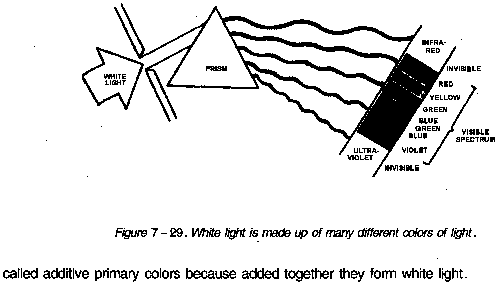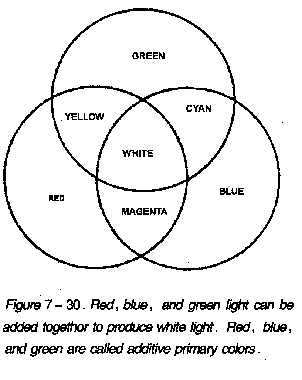Color Printing
PROCESS-COLOR PRINTING
Products may be printed in two or more colors by almost all of the processes described earlier. The simplest method of color reproduction is flat-color printing. A separate plate is prepared for each color desired. Plates are then printed in sequence on a single sheet of paper. Each plate is covered with the desired color ink and then printed in register with all of other color images. The process-color printing method is used to reproduce full-color pictures such as the colored comtinuous tone photographs. Process-color activities include: color separation, color correction, and color reproduction.
COLOR SEPARATION
A beam of white light passed through a glass prism results in a rainbow of color. This is because white light is really a mixture of all the colors of light. Each color refracts or bends differently as it enters and leaves the prism, Figure 7-29.

Three colors of light-red, blue, and green-can be used to reproduce white light, Figure 7-30. Where all three colors of light overlap, white is produced. Red, blue, and green are called additive primary colors bcause added together they form white light.

| 0 Comment | More comments » |
|---|
Jardine Printing Pte Ltd Mailing Address: 61 Ubi Road 1, #02-25 Oxley Bizhub, Singapore 408727 Tel: +65 6749 9118 E-mail: sales@jardine.com.sg

